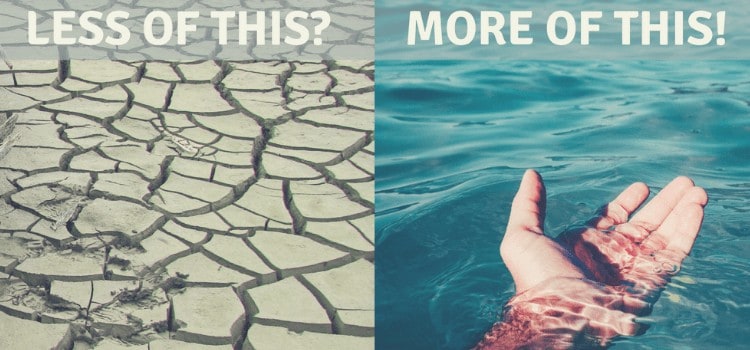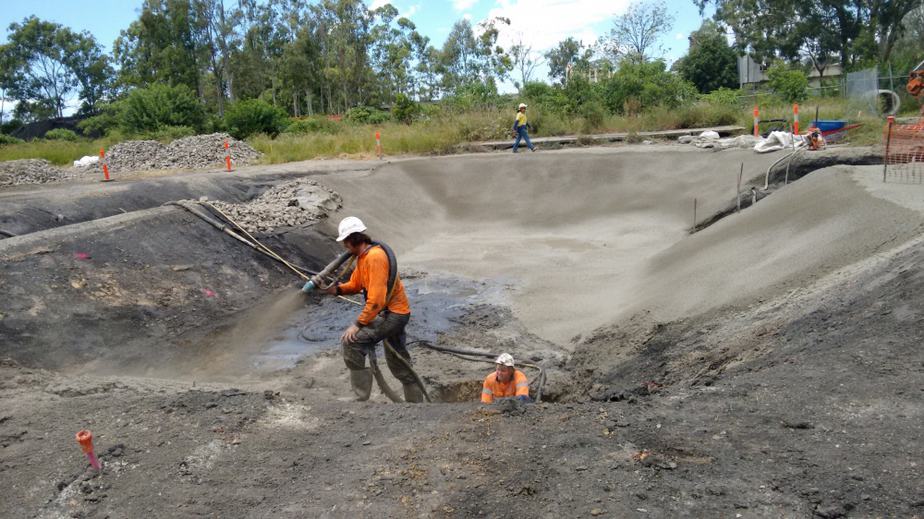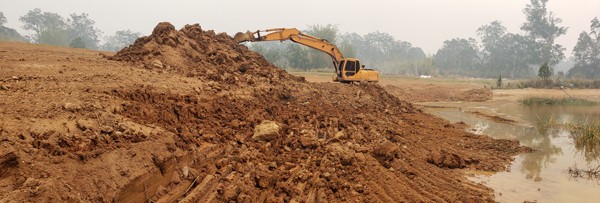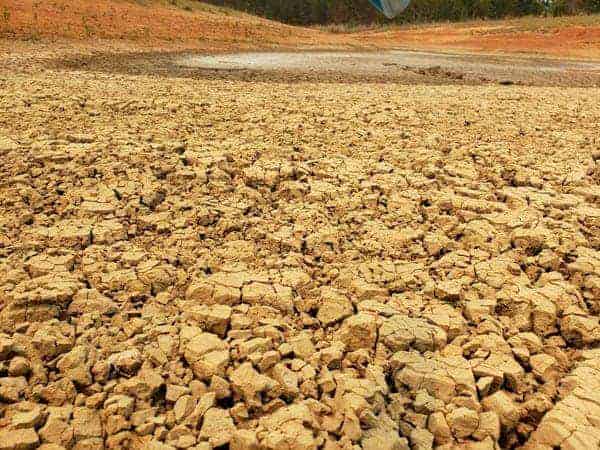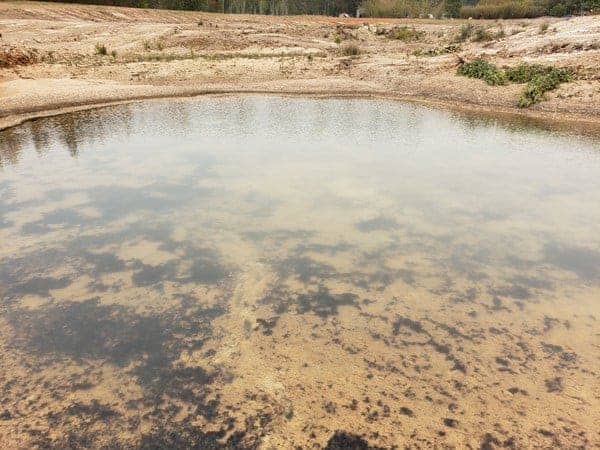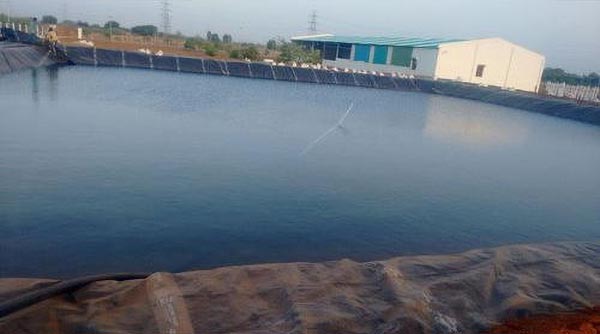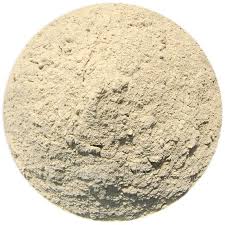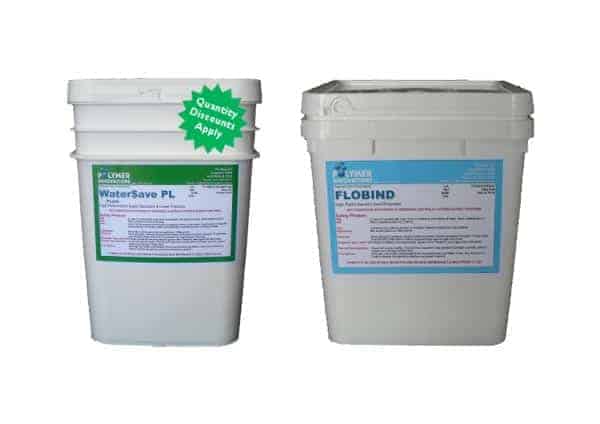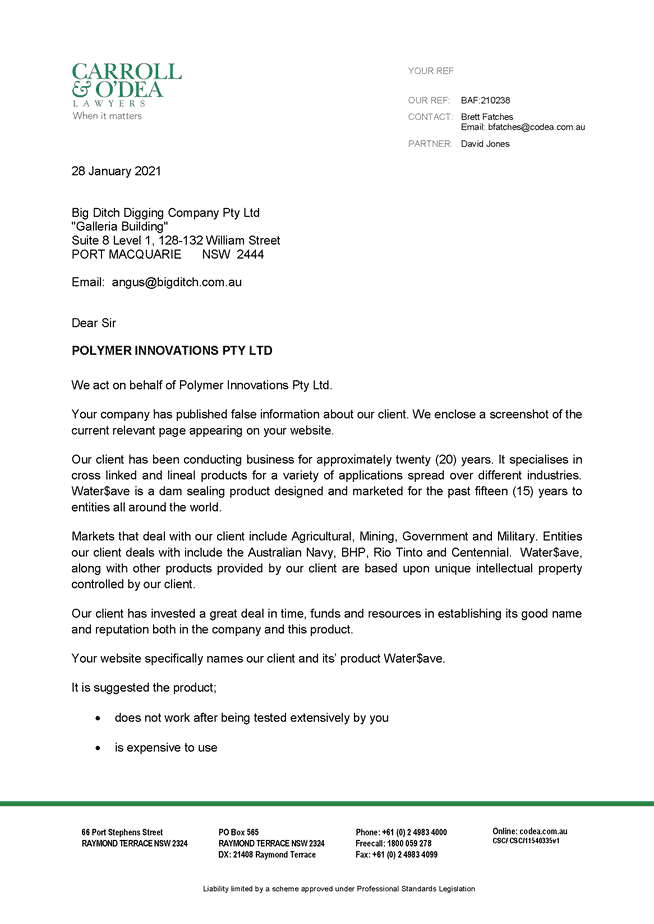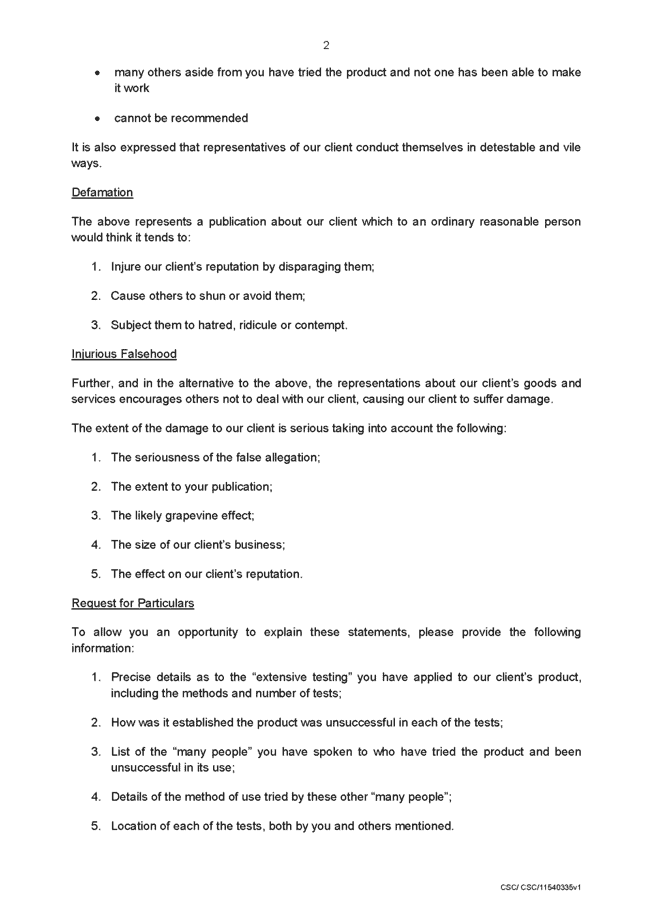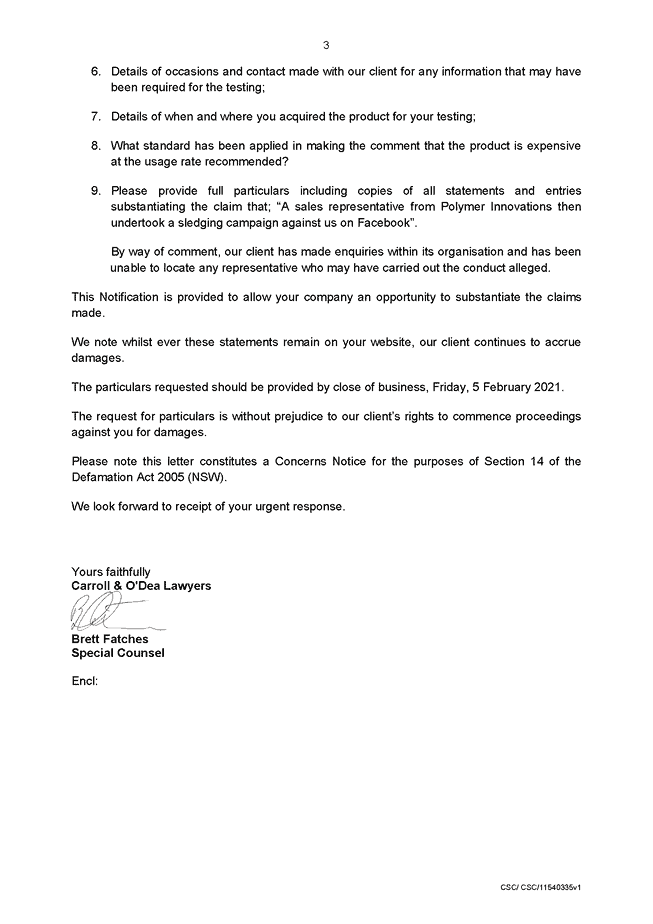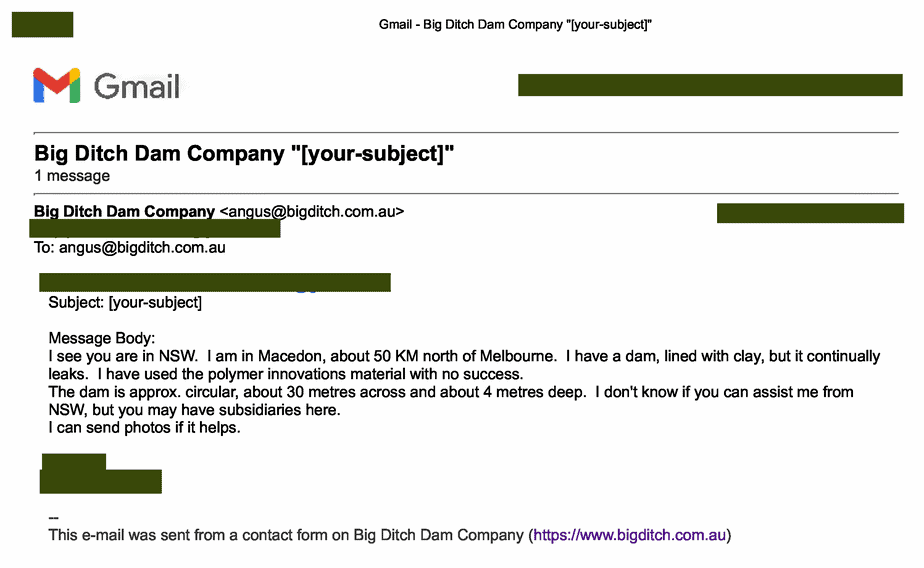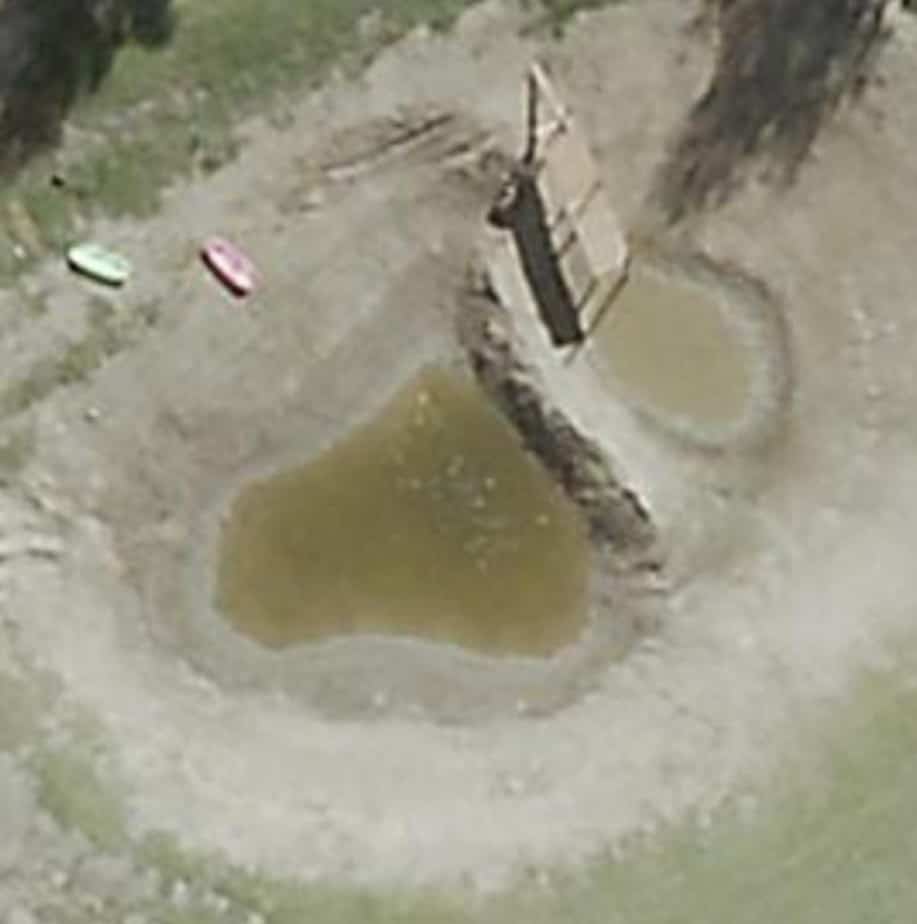Super absorbent polymers (SAPs)
Watersave is a product by Polymer Innovations and it’s sold in various size containers depending on how much you need.
It comes in a granulated form and looks a little like sugar.
We have tested this product extensively and have never had any success with it, and we have spoken to many people who have tried the product, and not one has has been successful sealing their dam.
Another downside is that it is very expensive at the usage rates recommended.
We would definitely not recommend it’s use.
In January 2019, we had Andrew Evans of Polymer Innovations contact us and he issued a series of threats about his intention to sue us for having this opinion.
Andrew Evans son, Lachlan Evans, who is listed as the sales representative for Polymer Innovations then undertook a sledging campaign against us on Facebook.
We find these actions detestable & vile – and we stand by our opinion that we would never recommend this product.
Threats of legal action from Polymer Innovations
Below is the letter received from some law firm representing Polymer Innovations. My answers to each of their points are included below
We act on behalf of Polymer Innovations Pty Ltd.
Well woopity do for you
Your company has published false information about our client.
No, I’ve published true information that your client doesn’t like. That’s your clients problem, not mine
We enclose a screenshot of the current relevant page appearing on your website.
Great. You probably charged your client $50 for that screenshot
Our client has been conducting business for approximately twenty (20) years.
Wow. That is so impressive (you don’t sense any sarcasm do you?. I’m told it’s the lowest form of humour. But you have to go with what you’ve been given)
It specialises in cross linked and lineal products for a variety of applications spread over different industries.
Are you under the impression that I’m in some way interested in your clients self spun PR?
Water$ave is a dam sealing product designed and marketed for the past fifteen (15) years to entities all around the world.
Wow! Great! Smashing!
Markets that deal with our client include Agricultural, Mining, Government and Military.
I’m feeling sleepy
Entities our client deals with include the Australian Navy, BHP, Rio Tinto and Centennial. Water$ave, along with other products provided by our client are based upon unique intellectual property controlled by our client.
Are you going to get to the point – because I have dams to repair
Our client has invested a great deal in time, funds and resources in establishing its good name and reputation both in the company and this product.
Your client doesn’t have a good name with people that contact me. Are you saying that makes them bad people? Is this some ‘the enemy of my enemy is my friend’ Sun Tzu psychobabble?
Your website specifically names our client and its’ product Water$ave.
You have a truly amazing grasp of the obvious, and apparently you can read. Well done. Your mother must be very proud of you. Those private school fees finally paid off
It is suggested the product;
-does not work after being tested extensively by you
-is expensive to use
No, it is not suggested. It is written. With words.
-many others aside from you have tried the product and not one has been able to make it work
Yes, that’s what it says. I do remember what I wrote, but thanks for reminding me. Are you suggesting I have short term memory loss. Or are you just padding your bill?
-cannot be recommended
I don’t recommend it. Yes, well done. Your comprehension is impressive. You could also say ‘can not be recommended’ – but quite honestly, I don’t know which is grammatically correct. Grammar is not my super power
It is also expressed that representatives of our client conduct themselves in detestable and vile ways.
Yes, I believe that Lachlan Evans of Polymer Innovations trolling Facebook business pages, and phone calls from Andrew Evans threatening legal action because someone writes an honest review based on their experience are vile and detestable.
Other words for vile and detestable are:
If you don’t like vile and detestable, pick another two words from the list above. Personally, I like ‘grody’ & ‘godawful’
Defamation
You’re hilarious! Will I see you at the comedy club open mic on Saturday night?
The above represents a publication about our client which to an ordinary reasonable person would think it tends to:
1. Injure our client’s reputation by disparaging them;
An expert opinion will injure your client? Have you never heard of ‘sticks and stones will break my bones, but words will never hurt me’?. Your client must be a bleeder, and have skin with the resilience of custard to be injured by my opinion. Am I an expert? Maybe. I was President of BHP Diamonds and I oversaw the building of the two biggest tailings dams in history, I’ve built more dams than anyone in Australia, I’ve won more awards for dam innovation and dam repair than anyone else, I have built and repaired dams for 30 years, and Big Ditch is the authority website for dam building because I give my honest opinion based on my experience. Are you suggesting I should lie? While I appreciate your thoughts on a possible new innovative counter-intuitive business strategy – I am wary of its potential downside
2. Cause others to shun or avoid them;
Shun and avoid your client?. Is your client a teenage girl? Is this like the movie ‘Mean Girls’ and your client is Lindsay Lohan? It’s a little overly dramatic language you’re using don’t you think?. No, I just think they may not buy your client’s product, or if they have, they might get me to dig that slop out of their dam and repair their dam properly. Shun and avoid suggests they might cross to the other side of the street if they saw your client coming the other way – and that would require them to know what your client looks like. I don’t believe that the majority of people with leaking dams carry polaroid photos of your client, just in case they find themselves in such a situation. But that’s just a guess. I have no conclusive data to base that assessment on
3. Subject them to hatred, ridicule or contempt.
No, you’re ridiculous. And you sound like a whiny little bitch
Injurious Falsehood
Did you make that up for your big word homework?
So here’s the thing – Injurious falsehood arises when a person (the defendant) makes false representations about the goods and services of another (the plaintiff).
You would have to prove that I made false statements knowing they were false.
But see, I made statements that I believed to be true, but that you believe are false. Are you suggesting I’m confused and mentally deficient – not knowing up from down, false from true, or my arse from my big toe?
I‘m not going to lie, some days do feel like that
Further, and in the alternative to the above,
Further, and in the alternative to the above?
Why don’t you talk like a normal human being and not a twat? I don’t even know what that means? Does it mean ‘also’.
You obviously come from the ‘Why use one word when you can murder eight words’ side of the tracks
the representations about our client’s goods and services encourages others not to deal with our client,
Depends if they think my opinion is valuable. Some would. Some wouldn’t. I don’t know.
But when you Google ‘dam builder’ – Big Ditch will come up first – because Google’s algorithm is based on E.A.T – Expertise. Authority. Trustworthiness – and just a clarifying point if I may, lying about the effectiveness of products is not trustworthiness – it’s troothiness – and Stephen Colbert copyrighted that word in 2015
causing our client to suffer damage.
Oh boo-hoo, you poor little fragile thing.
‘To live is to suffer, to survive is to find some meaning in the suffering’ – Friedrich Nietzsche.
I think the meaning you’re looking for in your clients suffering is that he should make a better product.
My opinion only. What would I know. You’re the genius
The extent of the damage to our client is serious taking into account the following:
1. The seriousness of the false allegation;
2. The extent to your publication;
3. The likely grapevine effect;
4. The size of our client’s business;
5. The effect on our client’s reputation.
I’m going to send you a bill for $500 for having to spend 30 minutes of my valuable time to read this tripe
Request for Particulars
You can request anything you like. Whether you get it is another question
To allow you an opportunity to explain these statements, please provide the following information:
I don’t have to give you anything Friendo
(Javier Bardem. No Country for Old Men)
1. Precise details as to the “extensive testing” you have applied to our client’s product, including the methods and number of tests;
See above
2. How was it established the product was unsuccessful in each of the tests;
It was established that the product was unsuccessful because the dams kept leaking. Seems conclusive and does not seem to require further tests
3. List of the “many people” you have spoken to who have tried the product and been unsuccessful in its use;
So your client can contact them and harass them like they did me.
You’re a very silly man
4. Details of the method of use tried by these other “many people”;
Oh shut up.
5. Location of each of the tests, both by you and others mentioned.
The answer is purple. Or 44. Either works for that question
6. Details of occasions and contact made with our client for any information that may have been required for the testing;
When he rang me to threaten legal action, I said – Friendo, send me your product and exact details of how you want me to apply itand then I’ll write a review of exactly what happened.
Your client didn’t take me up on the offer. Hmmm, I wonder why? Because I called him friendo? Surely not. It’s a term of endearment.
7. Details of when and where you acquired the product for your testing;
Your client knows when I first purchased the product, why don’t you ask him to do some of this heavy informational lifting?
Seriously, dude, you’re not the boss of me.
My beautiful kelpie ‘Daisy’ is the boss of me – because I’d do anything for her.

(Daisy)
8. What standard has been applied in making the comment that the product is expensive at the usage rate recommended?
The standard of price.
Is this a new concept to you?
Did you travel here from an outer galaxy?
Are you proof that aliens exist?
9. Please provide full particulars including copies of all statements and entries
substantiating the claim that; “A sales representative from Polymer Innovations then undertook a sledging campaign against us on Facebook”.
No, I’ll publish it here when I can be buggered spending more time on your ridiculous demands.
Note to you – I don’t work for you
By way of comment, our client has made inquiries within its organisation and has been unable to locate any representative who may have carried out the conduct alleged.
By way of comment – you want me to publish his name and his trolling here? Sure, I can do that. Lachlan Evans, the son of Andrew Evans
In fact, why don’t I publish it on the front page of this website.
In it’s own special section with flashing gifs all around it
This Notification is provided to allow your company an opportunity to substantiate the claims made.
No, they’re all in the article. Haven’t you got something better to do?
Oh, I forgot, billable hours.
Parasite is what you do.
We note whilst ever these statements remain on your website, our client continues to accrue damages.
And now your stupid letter is on my website as well. Well done friendo, you’ve really helped your client. You should get a bonus
The particulars requested should be provided by close of business, Friday, 19 March 2021.
No they shouldn’t.
You’re very passive aggressive. Without the passive.
Like a bacon & egg burger without the bacon
The request for particulars is without prejudice to our client’s rights to commence proceedings against you for damages.
Oh so you are a little bitch?
You can’t even write a ‘with prejudice’ letter.
Scared of having your little bully boy letter brought up in court?
Please note this letter constitutes a Concerns Notice for the purposes of Section 14 of the Defamation Act 2005 (NSW).
Whatever dude. Bite me.
We look forward to receipt of your urgent response.
So here’s the deal, in case you weren’t at law school on defamation day – the law of defamation protects free speech by allowing people to express opinions, even harsh ones, on matters of public interest, by providing a shield known as the honest opinion defence
Yours faithfully
Carroll & O’Dea Lawyers
Brett Fatches
Special Counsel
Oh, so you’re ‘special’.
Does that mean you travel on the short bus, and not the long bus?
Here’s an idea for your client, instead of spending his money on threatening people who give an honest opinion about his product – take that money and put it into research and development.
Nightnightville calls me.
Your writing makes me sleepy
This all leads me to ask one single conceptual question wrapped up in a popular verse
Oh baby, don’t hurt me
Don’t hurt me
No more
No, I don’t know why you’re not fair
I give you my love,
but you don’t care
So what is right
and what is wrong?
Gimme a sign
What else can I say?
It’s up to you
-Haddaway. What is Love
Follow up communication after re-reading Mr Fatches letter again
From: Angus@bigditch.com.au
Immediately after reading your letter, I blacked out and fell into a coma.
Then I woke up, but read your letter again, and blacked out.
Again.
Then when I woke up, and I forgot what had happened. And did it successfully.
Or at least that’s what I thought.
Because then I woke up in hospital with a bandage on my head, only to have the doctors tell me that I had apparently peeked at your letter.
Again
p.s. while I was in hospital, I do remember having a dream in which I had a close and personal relationship with a sea captain, but that’s neither here nor there
Last week, 2,464 people found me on Google.
Next week, 2,464 or more people will find you on Google through me
You’ll be more famous than Mr Potato Head
p.s. how’s your strategy of trying to shut down free speech working out for you?
Brett Fatches
‘Special’ Counsel
Carroll O’Dea Lawyers
Email: bfatches@codea.com.au
Phone: (02) 4983 4000
Location: Newcastle, Port Stephens
Let me look into your crystal balls
What I will do is publish every e-mail, comment or contact that has a negative opinion of Polymer Innovations from now on.
10th March 2021
Dam repair client xxxx xxxxxxxx (name redacted because Polymer Innovations likes to contact people and threaten them if they don’t think their product works) of Brisbane says he tried Water$ave and it didn’t do anything. We started today removing Water$ave residue from this clients dam, and we are in the process of repairing his dam properly

18th March 2021

19th March 2021
XXX XXXXXXX from XXXXXXXX Western Australia rang on number XXXX XXXXXX (name, address and phone number redacted to protect client from retribution by Polymer Innovations
Verbatim discussion recorded below
“I actually read your piece on Polymer Innovations, and I just wanted to contact you to let you know that we also bought that Water$ave rubbish. It did nothing at all. I think they trade on people’s ignorance of dam repair, and their hope of being able to repair their dam. That said, could you tell me how to fix our dam?”
5 Apr 2021
XXXXX XXXXXXXX from Bridge Park
First off, I went through your website and read through all the stuff about Watersave – You, my friend, are hilarious! Love that you didn’t back down from some idiot with a lawyer!
19 Apr 2021
XXXXXX XXXXXXX from Cooma NSW
Hey mate, fuck that was hilarious, I also spent I think $1000 on those buckets of bullshit in my dam and I think it actually started leaking faster. So it may well be a lubricant?
(Not going to lie, that made me laugh out loud. Twice)
23 Feb 2022
XXXXXX XXXXXXX from Brisbane QLD
I came across your article, unfortunately, too late. I read it with great interest, it was to the point, informational & ended on a great note of humor.
Yes, the Polymer granules did not work for either of our 2 seeping dams, not even to slow the seepage, it was a total waste of time & money. I know of another 2 families that have tried this product for their leaking dams, they have had no success either.
We thought be buying this product it would work quick, no toxins, & hardly any work. I have to admit, we were also sold on the “we work with mines, etc” so it has to be good if the mines , Councils, etc are in cooperation, right?
Product didn’t work for us, & from there, we were given no further advice, what to do or where to go from there.
Back to old school Sodium Betonite, yep, it works, slowly, but we got results & the price was ‘normal’ unlike Polymer.
Thanks for the write-up, everyone has a right to an opinion & especially on products that are costly. Thank you!
Further reading
If you want to read about the environmental dangers of super absorbent polymers, click HERE.
If you want to read about the dubious business practices of Polymer Innovations, click HERE
